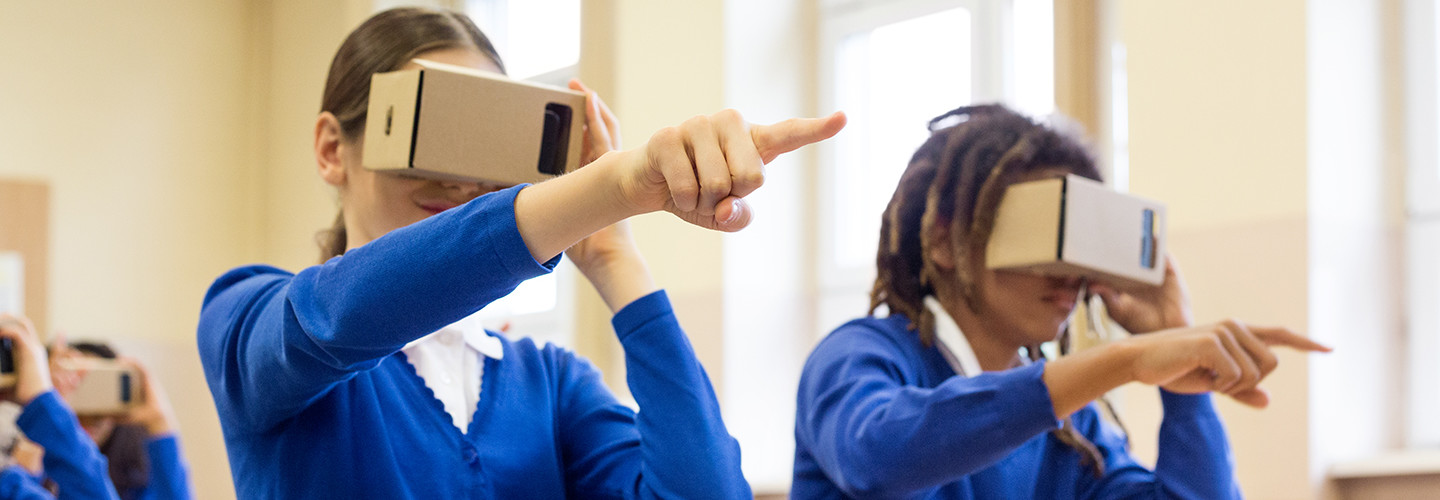4 Tips for Preparing Your Network for VR
Whether it’s letting students explore faraway places or take a more in-depth look at the world around them, virtual reality has a lot of promise for the K–12 classroom.
“I think VR has amazing potential because right now it’s in its baby stages and as it grows and matures you’re going to have a depth in the apps themselves that’s going to be incredible,” teacher Amanda Youngblood tells EdTech. “I see the ability to take students and put them in a work situation where they may not be able to go because they are too young.”
As with all new technologies, in order for schools to succeed with VR, they need to make sure they have the proper infrastructure in place.
Here are 4 tips for success.
SIGN UP: Get more news from the EdTech newsletter in your inbox every two weeks!
1. Start with Basics Like Google Cardboard
While Tony Inglese, chair of CoSN’s Emerging Tech Committee, can see future VR tools with lots of sensor and data streams requiring massive amounts of bandwidth, today’s VR options are pretty basic.
“Really what you need with Google Cardboard and Google Expeditions are access points that can support 20 to 30 students streaming Netflix,” says Ingelse. “Right now, that’s really quite doable.”
VR expert Maya Georgieva writes on EdTech that tools like Google Cardboard are also a great gateway to VR for classrooms that can’t afford more complex viewers.
2. Adapt a Computer Lab Structure
As more complex VR tools come to the forefront and become easier to access for schools, Inglese predicts that school districts will return to a computer lab model.
“The good news is that generally not every child will have a VR device that requires a lot of bandwidth,” he says. “We’ll probably be sending kids to VR labs, at least initially. Those individual spaces will obviously require a lot more bandwidth, but it can be done in a room or a couple of rooms.”
3. Create a Modular Network Ready for Expansion
With these new technologies coming into play, Inglese says that fiber optics will likely largely replace copper wires. Choosing a switching fabric comes next.
When updating a network with VR in mind, Inglese recommends looking at the bandwidth standards these devices require and keeping things like latency in mind. With immersive experiences, any kind of lag can cause motion sickness.
Inglese recommends that schools start with what they need, but make sure networks have a modular structure.
“Think about buying what you can afford now, but map for what’s next,” he says. “In the future, you won’t have to rip and replace everything, you can just add various modules to support your needs.”
4. Network Monitoring Is Key to Delivering Reliable Connections
Though VR is new and exciting, Inglese says managing your network for these tools is pretty much “business as usual.”
“It’s what we do every day in technology. You’re constantly monitoring your network for activity,” he says. “Network monitoring is the key aspect and it’s already happening on many levels in schools. You need to have a good network administrator who’s keeping an eye on things constantly.”








